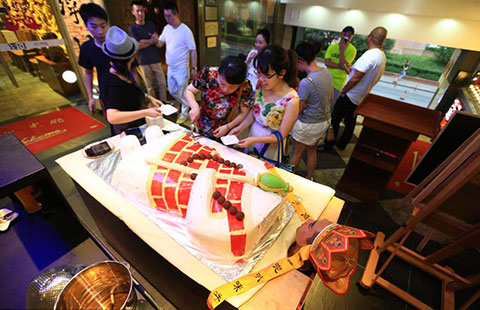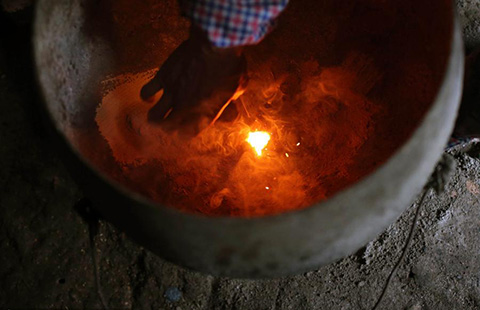Dead cities' new lives
Updated: 2015-07-22 08:11
By Erik Nilsson(China Daily)
|
||||||||
 |
|
Ruins of ancient loess structures in the Xinjiang Uygur autonomous region's Turpan prefecture. [Photo by Erik Nilsson/China Daily] |
The Easter Bunny came to town-specifically an ancient ghost town in the Xinjiang Uygur autonomous region.
When the day celebrating Jesus' resurrection coincided with the Chinese Tomb Sweeping Day this April, our 3-year-old scoured Yar's ruins for candy-packed plastic eggs stashed by a pagan hare.
It dawned on us that the fact we staged the egg hunt in the dead city of Yar, also known as Yarkhoto, or Jiaohe, shows how its ancient position as a multicultural Silk Road nexus breathes new life into its international appeal. That narrative thread hems Turpan's rich tapestry of past and present cultures along the ancient and emergent routes.
The site's bygone multiculturalism sired the city that lured us there.
Yar was a global village before the term existed. Yet intolerance made it a mass grave.
Its heterogeneous composition propelled prosperity for 1,600 years, until Islamic Mongolian conquerors incinerated Yar to enforce religious homogeny.
This left what Hungarian-British archaeologist Aurel Stein a century ago called "a maze of ruined dwellings and shrines carved out for the most part from the loess soil".
His depiction remains apt.
This early legacy attracts a growing plethora of modern peoples from further afield. Even Americans.
And we contributed to its internationalist revitalization by observing our foreign festival among its remnants. Chinese unacquainted with the egg-stashing custom gawped.

 Rare imperial porcelain revealed for first time in Capital Museum
Rare imperial porcelain revealed for first time in Capital Museum
 Cosplay enthusiasts pose during 'Anime Friends' in Brazil
Cosplay enthusiasts pose during 'Anime Friends' in Brazil
 Top 10 services changed by online-to-offline
Top 10 services changed by online-to-offline
 People evacuated after downpour in SW China
People evacuated after downpour in SW China
 Identifying counterfeit money
Identifying counterfeit money
 A New Era in US-Cuba Relations Begins
A New Era in US-Cuba Relations Begins
 Eat the 'flesh' of 'Monk Xuanzang' at this shop
Eat the 'flesh' of 'Monk Xuanzang' at this shop
 The dying of craft of repairing pans
The dying of craft of repairing pans
Most Viewed
Editor's Picks

|

|

|

|

|

|
Today's Top News
Ling Jihua's arrest a vital lesson for officials
Cuba, US ties called first step
Life details of Tennessee shooter emerge, but motive elusive
China can now shop at JD.com's US Mall
UN Security Council endorses Iran nuclear deal
US, Cuba set to reboot relations after split
Mayor to turn Zhanjiang into green economic powerhouse
Private firms' access to arms sector widens
US Weekly

|

|







